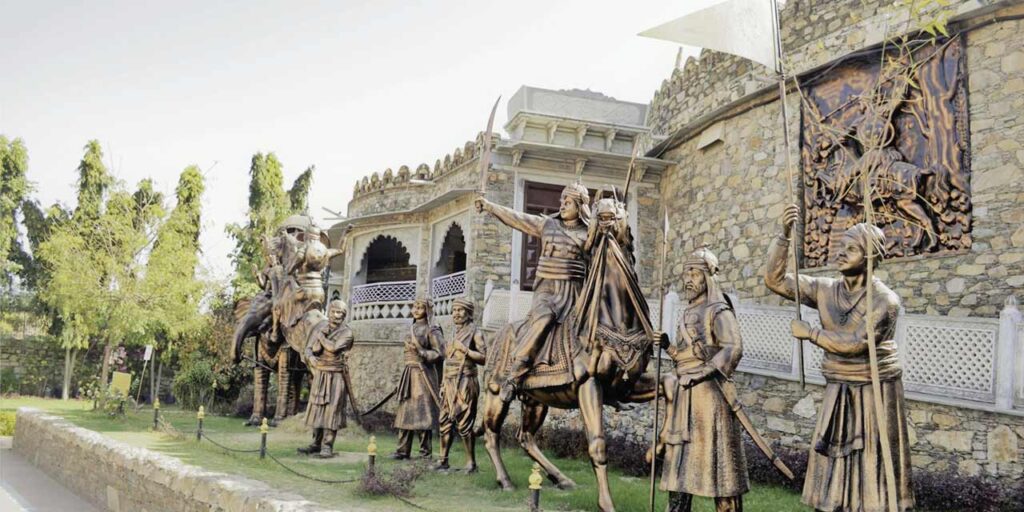In the heart of Rajasthan, nestled among the Aravalli hills, lies a land where the soil tells stories and the winds echo valor — Haldighati. Though modest in size compared to grand forts like Chittorgarh or Kumbhalgarh, Haldighati holds a legendary place in Indian history for being the site of one of the most iconic battles ever fought on Indian soil — the Battle of Haldighati in 1576.
🌄 A Valley Painted in Turmeric
Haldighati gets its name from the yellowish soil, which resembles turmeric (haldi in Hindi). The pass cuts through the Aravallis and connects the districts of Rajsamand and Udaipur. The moment one sets foot here, a strange silence surrounds — not empty, but filled with whispers of the past.
This isn’t just a geographic passage. It is a gateway to valor, where blood once stained the golden earth, and the clash of swords echoed in the valley.
🏇 Maharana Pratap: The Lion of Mewar
The soul of Haldighati is inseparable from Maharana Pratap, the great warrior-king of Mewar. After the fall of Chittorgarh, the Mewar kingdom had relocated its capital to Kumbhalgarh, and later Udaipur. Refusing to bow to the Mughal emperor Akbar, Maharana Pratap vowed to protect his land and freedom at all costs.
It was in the narrow, curved paths of Haldighati on 18 June 1576 that Maharana Pratap faced off against the mighty Mughal army led by Man Singh of Amber.
⚔️ The Battle that Defined Resistance
The Battle of Haldighati wasn’t just a war — it was a symbol of Rajput pride and independence. Though the Mughal forces outnumbered the Rajputs, Maharana Pratap charged into the battlefield with unmatched courage.
By his side was his loyal horse, Chetak, who has now become a legend of his own.
It is said that even after being grievously wounded, Chetak leapt across a large stream, carrying the injured Maharana Pratap to safety — only to breathe his last shortly after.
A small cenotaph in Chetak’s memory still stands near Haldighati.
The battle didn’t result in a clear Mughal victory. Maharana Pratap was never captured and continued to wage guerilla warfare, reclaiming much of his lost territory in later years.
🏯 The Fort and Its Legacy
Though not a massive structure like other forts of Rajasthan, Haldighati Fort (often referred to as nearby Khamnore Fort or Rakt Talai) stands as a silent witness to this epic battle.
Today, visitors can explore:
- Rakt Talai – the field where the fiercest part of the battle occurred.
- Chetak Samadhi – a tribute to the brave horse who became a legend.
- Maharana Pratap Museum – showcasing weapons, paintings, and dioramas of the battle.
- Statues and memorials of Maharana Pratap and Chetak.
- The newly built light and sound show, bringing the war alive for visitors.
🎭 A Living Legend
Haldighati is not just a place on the map; it is a living, breathing reminder of what courage, loyalty, and pride mean. The local folklore, songs, and tales passed down generations still speak of the thunderous charge of Pratap, the pain in Chetak’s eyes, and the unwavering spirit of Mewar.
Even centuries later, Maharana Pratap remains a symbol of resistance, often invoked when speaking of patriotism and valor in Indian culture.
📍 Travel Guide: Visiting Haldighati
- Location: ~40 km from Udaipur, Rajasthan
- Best Time to Visit: October to March
- How to Reach: Accessible by road from Udaipur by taxi or local bus.
- Nearby Attractions: Nathdwara Temple, Kumbhalgarh Fort, Udaipur City Palace
